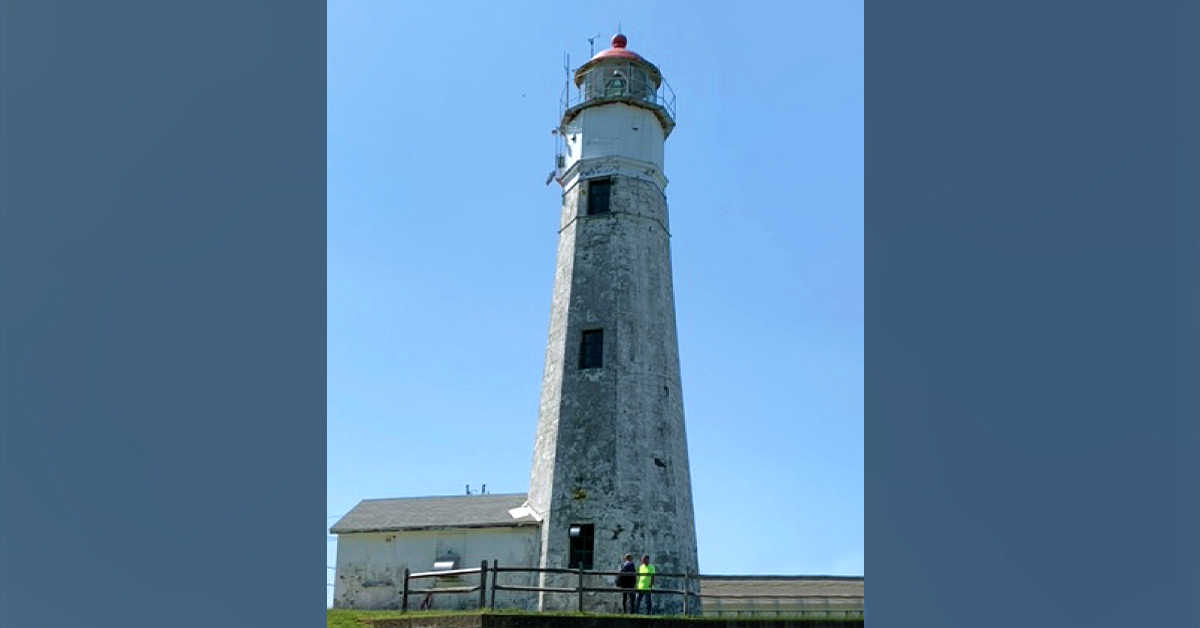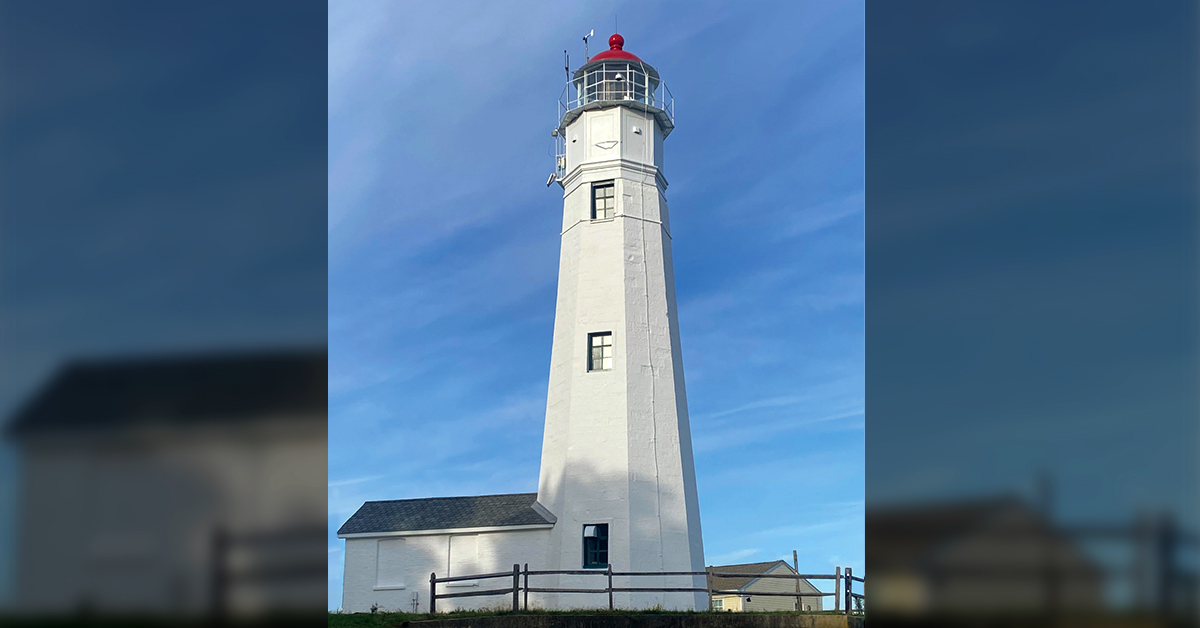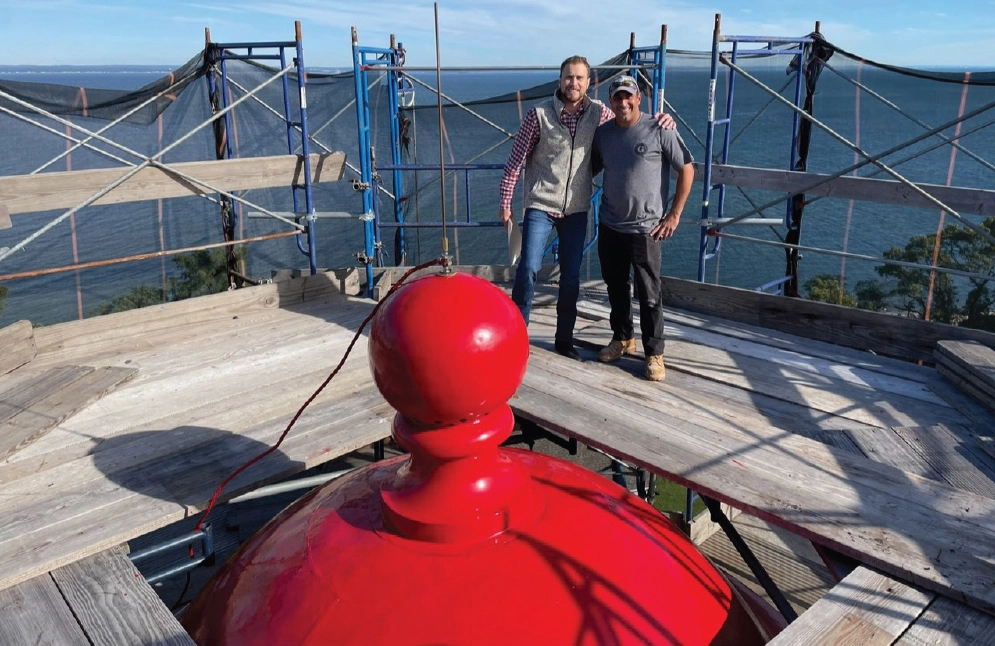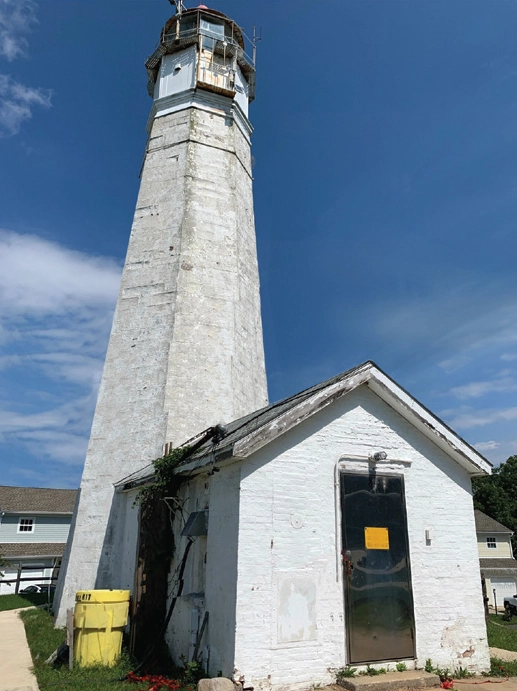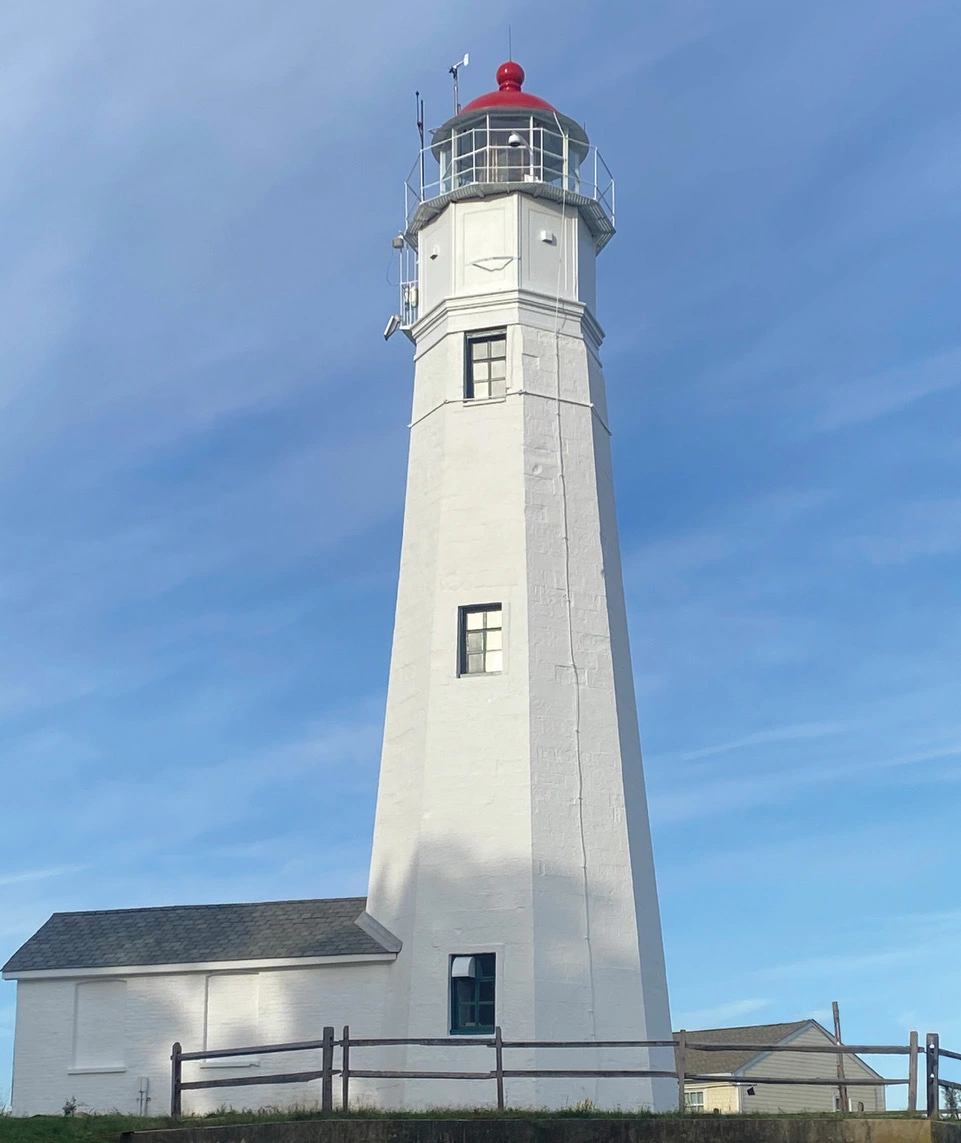Eaton’s Neck Lighthouse is a brownstone lighthouse that’s been standing in a harsh and exposed environment for almost two and a quarter centuries on Huntington Bay and Long Island Sound, New York. The lighthouse was built in 1799, electrified in 1921. It is listed in the National Register of Historic Places, and its site is a U.S. Coast Guard (USCG) station.
The Graciano team oversaw the entire interior and exterior restoration that required a 73-foot tower scaffold, restoration of damaged stone or mortar and replication of all historic details including:
- Abating asbestos-containing materials in ceilings, walls and floors
- Dismounting and reinstalling/replacing electrical equipment, panels and power
lines - Demolishing and replacing roofing, roof membrane and underlayment
- Removing and replacing exterior wooden trim, soffit and fascia
- Removing loose paint and plaster, and repointing and coating brickwork
- Replacing heavy, deteriorated metal doors and doorframes with weather-
resistant, authentically detailed stainless-steel portals - Removing lead paint and debris from central support column, spiral stair,
railings, lantern frames, decks, beams, ladder, cornice and lens mount, and
repairing, painting or treating cast-iron, bronze and copper surfaces and
components to prevent corrosion and restore historical forms - Cleaning and silicate-coating exposed interior masonry
- Patched 226 square feet of damaged brownstone with mineral-based, restoration-
grade mortar - Complete repointing of all historic brownstone mortar joints (3600 LF)
- Painting the exterior with KEIM mineral silicate architectural protection coating
- Repairing – and fabricating replacement parts for four 19 th -century, cast-iron
framed windows, and completely replicating a deteriorated fifth window - Repairing the tower’s copper vent ball (finial) and replacing the lightning rod and
grounding cable - Reglazing the lighthouse’s 20-pane lantern
Project Details
Name: Eaton’s Neck Lighthouse
Completion Date: 11/29/2022
Owner: United States Coast Guard
General Contractor: Graciano Corporation
Engineer: United States Coast Guard
Manager: Graciano Corporation
Downloads
Project Included
- Waterproofing
- Tuck Pointing
- Structural Repairs
- Sealing
- Masonry Restoration
- Masonry Cleaning
- Lead Paint Removal
- Façade Repairs
- Demolition
- Cementitious Coatings
- Caulking
- Abating-Abestos
Glossary Terms
WaterproofingIt’s important to waterproof concrete structures to keep moisture out of the facility and to protect the structural components of concrete and imbedded reinforcing steel. If the integrity of the concrete is maintained, it can remain waterproof. Polyurethane is considered one of the best waterproofing materials. It can be applied seamlessly and penetrates the surface deeply and evenly. The polyurethane membrane will fill in even the finest cracks in concrete, reducing its water absorbency capacity. Many types of waterproofing systems can be used depending on your home’s structure
Tuck PointingTuck pointing entails removing loose or cracked mortar from brickwork or stone installations and replacing its new mortar to ensure structural integrity and to seal out damaging water and moisture. Mortar for tuck pointing must be carefully selected to ensure that its color and texture of the new mortar closely matches the existing material that was not compromised and did not need to be removed.
Structural RepairsMost concrete structures are reinforced by reinforcement rods (“rebar”) or structural steel. If the concrete skin of the structure has been damaged or has deteriorated, it is frequently necessary to restore or replace the steel substructure. In cases where the building has been built with little steel in the structure, it is frequently necessary to employ and anchoring system to stabilize the building before repairs can be made.
SealingSealing effectively closes the porous surface of concrete and makes it more impervious to damaging substances, such as gasoline, oils or melting agents. Sealants are available in clear formulations, for high visibility, high aesthetic areas, or in urethane formulations for high–traffic areas, such as parking decks or industrial floors.
Masonry RestorationMasonry restoration involves the repair of existing masonry materials or the complete replacement of damaged materials with new or reclaimed bricks or stones. Color and texture matching are key considerations in masonry restoration, as an accurate match can make areas of restored stone or brick blend in seamlessly with existing materials. To achieve an accurate color and texture match, it is frequently necessary to return to the original brick manufacturer for replacements, or to the original stone quarry where material for the existing stone components was cut.
Masonry CleaningMasonry cleaning entails the removal of dirt, debris, paint, and graffiti from various surfaces of masonry structures. Commonly used masonry cleaning techniques include high and low – pressure washing and chemical cleaning. Regardless of the method used, special care is taken to avoid over cleaning – and possibly damaging – aging masonry surfaces.
Lead Paint Removal
Façade RepairsFaçade repairs involve removing damaged or degrading concrete from the surfaces of a structure, stabilizing the repair site, and filling any voids or cracks with new material that has been formulated to match the color and texture of the existing material that surrounds the repair. Façade repairs can also demand the creation of customized forms to allow for replication of cast–in–place detail.
DemolitionDemolition entails the removal of damaged or undesired concrete. It is most frequently accomplished with a jackhammer or another piece of pneumatic equipment.
Cementitious CoatingsCementitious coatings are generally comprised of Portland cement that has been combined with a vermiculite or perlite premix. These coatings are used to provide fire protection on steel or concrete surfaces, and are typically sprayed on while a structure is under construction.
CaulkingCaulking is used to seal gaps between masonry surfaces, such as brick or stone, and other architectural elements, including window and door frames, decorative hardware or lighting fixtures. Caulking is most often applied with a gun, and is available in butyl, latex or customized formulations. The color of caulk is selected to match the surfaces surrounding the application site. When applied, the caulking gun is inserted in the gap to be filled. Caulking material is then injected into the void to seal the opening.
Abating-Abestos
